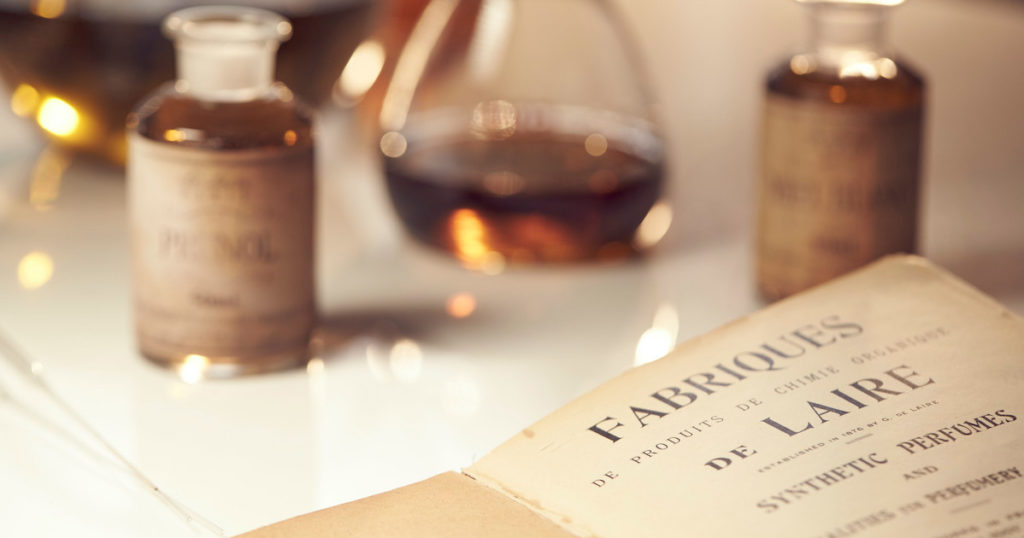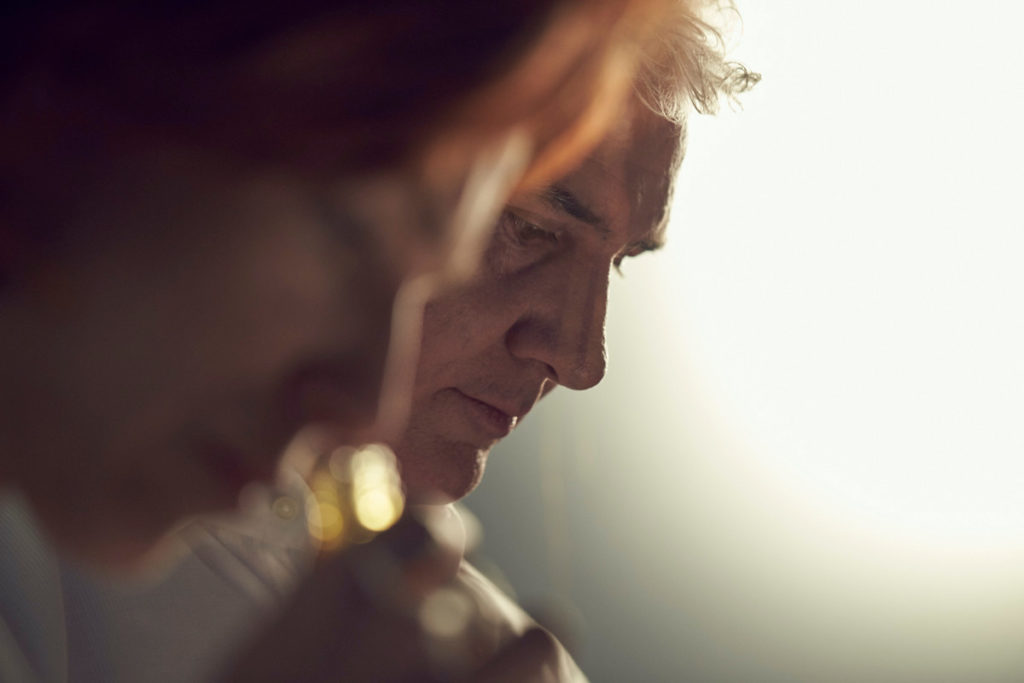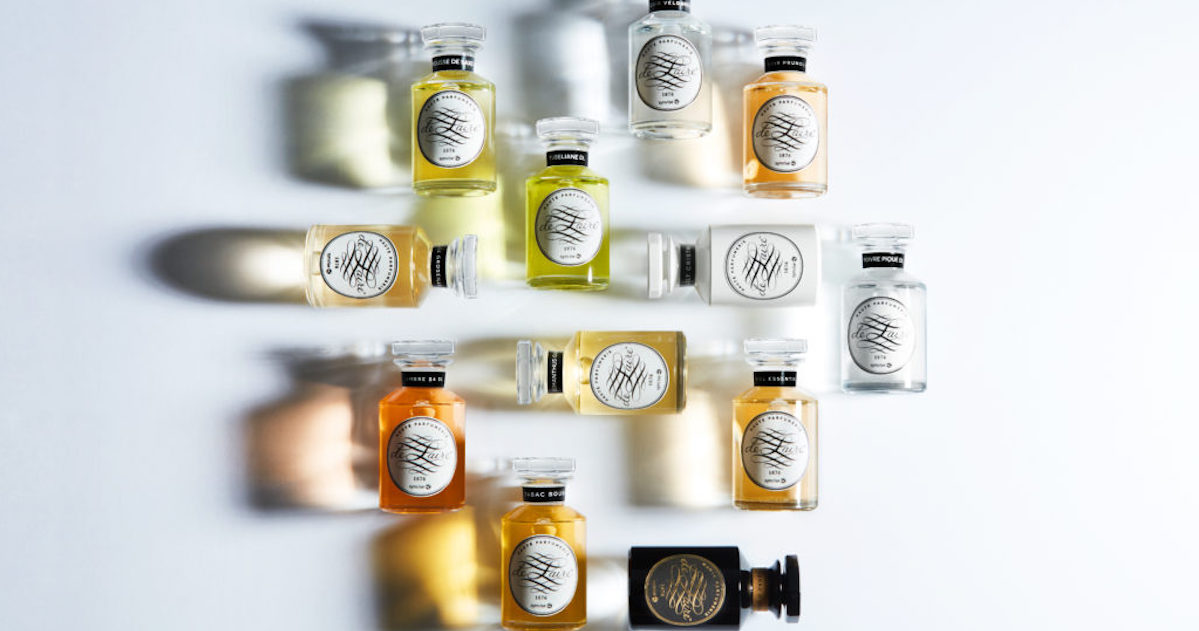Cette publication est également disponible en :
Français
This article was published in partnership with Symrise.
The history of Fabriques de Laire uniquely embodies modern perfumery, mainly through its famous bases, products of the intuition, vision and inventiveness of the company’s founders and successive collaborators which built its reputation. In a bid to breathe new life into an olfactory heritage that dates back over 100 years, Symrise has for some years now been developing a collection of twelve new bases. These creations, fruit of the work of in-house perfumers, are part of the de Laire heritage while laying the groundwork for the perfumery of tomorrow.
During the second half of the 19th century, perfumers saw their palette expand with the arrival of synthetic aromatic molecules. This was a revolution for the industry and the beginning of the era of modern perfumery. In 1876, Fabriques de Laire, now owned by Symrise, began researching, producing and marketing these compounds. The story began when Georges de Laire alongside chemists Ferdinand Tiemann and Wilhelm Haarmann identified and then synthesized a molecule that has since become an essential in perfumery: vanillin.
But it was Marie-Thérèse, married to the founder’s nephew, Edgar de Laire, who in 1891 had the brilliant idea of blending these synthetic molecules with natural raw materials to make pre-perfumes: the de Laire bases were born. Enveloped in these ingredients, synthetic compounds became easier to use by perfumers who could then recognise their full potential. Pascal Sillon, a perfumer at Symrise and driving force in the awakening of these sleeping beauties, explains: “It is thanks to Ambre 83 that de Laire was able to sell its vanillin at a time when perfumers were using 100% natural materials and, above all, essential oils.”

The modern era of perfumery
A few de Laire bases are still being sold in the early 21st century – bases that have spanned more than 100 years of modern perfumery and made a deep impression on the collective unconscious. Ambre 83, for instance, was created in the 1900s and is still bought by a handful of customers today. In 2010, perfumer Pascal Sillon began working on de Laire bases from Symrise as part of his MBA specializing in luxury brand marketing and international management. He wrote a thesis titled “De Laire – 1876 – Renaissance of an olfactory diamond.” It is thanks to him that these sleeping beauties are awakening once more. He is convinced that “a company built on mergers and acquisitions cannot turn its back on its historical and olfactory heritage; they are facets of its history, what forms it,” and that it should be proud of them. It took six years of hard work to persuade the in-house teams to recognize the advantages offered by reviving this legacy. The operation’s commercial benefits were not necessarily clear, and he got the impression that many perfumers felt that the bases were museum pieces.
Little by little, he set up a “circle of vanished bases” and worked with other Symrise perfumers on ideas of how to put the bases back in the spotlight. They finally decided to create new pre-perfumes, for and by the perfumers. Their collaborative work focused primarily on their function, not for the market, nor for anyone else, but for them, the perfumers at Symrise: “To have fun and to tell inspiring stories,” as Pascal Sillon puts it. But also “to ensure that we have exclusive creations that cannot be copied by the competition,” insists senior perfumer Émilie Coppermann.
Collaborative work
The perfumers were gradually won over by the approach, without knowing exactly where they were headed. Then, in 2015, they were given carte blanche for a year. Symrise offered them the luxury of working on five new bases that would become part of their palette at the 2016 World Perfumery Congress (WPC) in Miami. The perfumers got to throw off the shackles and play! The group included David Apel, Nathalie Benareau, Evelyne Boulanger, Alexandra Carlin, Émilie Coppermann, Aliénor Massenet, Maurice Roucel and, of course, Pascal Sillon. They met once a week, creating without any financial constraints and evaluating their trials themselves. “It was a real exchange,” says Pascal Sillon. The collaborative process was also very exciting for the teams. “It was magical to rediscover the old names, the old formulas from the beginning of the century. It was like putting a child in a toy shop; we were like children reading formulas!” laughs Émilie Coppermann.
The goal is to continue to promote the beauty of the alliance between natural and synthetic, to encourage a different use of the latest molecules discovered by the company and to play the exclusivity card. Pascal Sillon talked to master perfumer Maurice Roucel about reworking Ambre 83: “We started by asking ourselves what the new vanillin for the 21st century was.” He remembers the master perfumer’s unequivocal answer: ethyl maltol, a molecule with a gourmand praline-like flavor. This, in turn, provided the starting point for what was to become Ambre 84, giving the pre-perfume a more modern touch while ensuring that it remained true to its predecessor.

A new field of experimentation
Senior perfumer Aliénor Massenet explains that she has enthusiastically adopted some of the new bases. A huge fan of Ambre 84, she went so far as to use a 10% dose in one of her creations, I am not a flower for Floraïku. Thanks to Miel Essentiel, the nuances of anisic aldehydes and the addictive creamy-coconut facet of Tonkalactone are accentuated, and the new base inspired Aliénor to propose a fresh interpretation of mimosa. When Spicatanate is smelled by itself, it suggests the scent of garlic. But in the Rouge Groseille base, it really spreads its wings, acting as a scent enhancer and elevating the red and fruity dimension of red berries and the tart facet of rhubarb, as illustrated by So Repetto.
Now twelve in number, these new bases – just like all the new raw materials incorporated into their palette – open up a new and exclusive field of experimentation to Symrise perfumers. But they also know that there is no miracle recipe when it comes to blending them, and that the success of their creations lies above all in their expertise in knowing how to dose them precisely and find original combinations.
Photos : © Symrise








História é fantástica tive a curiosidade de ir pesquisar a História de Laire é fantástica….
Ja trabalhei numa Perfumaria e adorei a alta Perfumaria…as essências etc e as notas dos perfumes
Hoje sou Revendedora da Oriflame e adoro os perfumes e como tal eles têm peefume que foi desenvolvido em torno de um dos ingredientes mais premium e icónicos da Perfumaria. O acordo De Laire